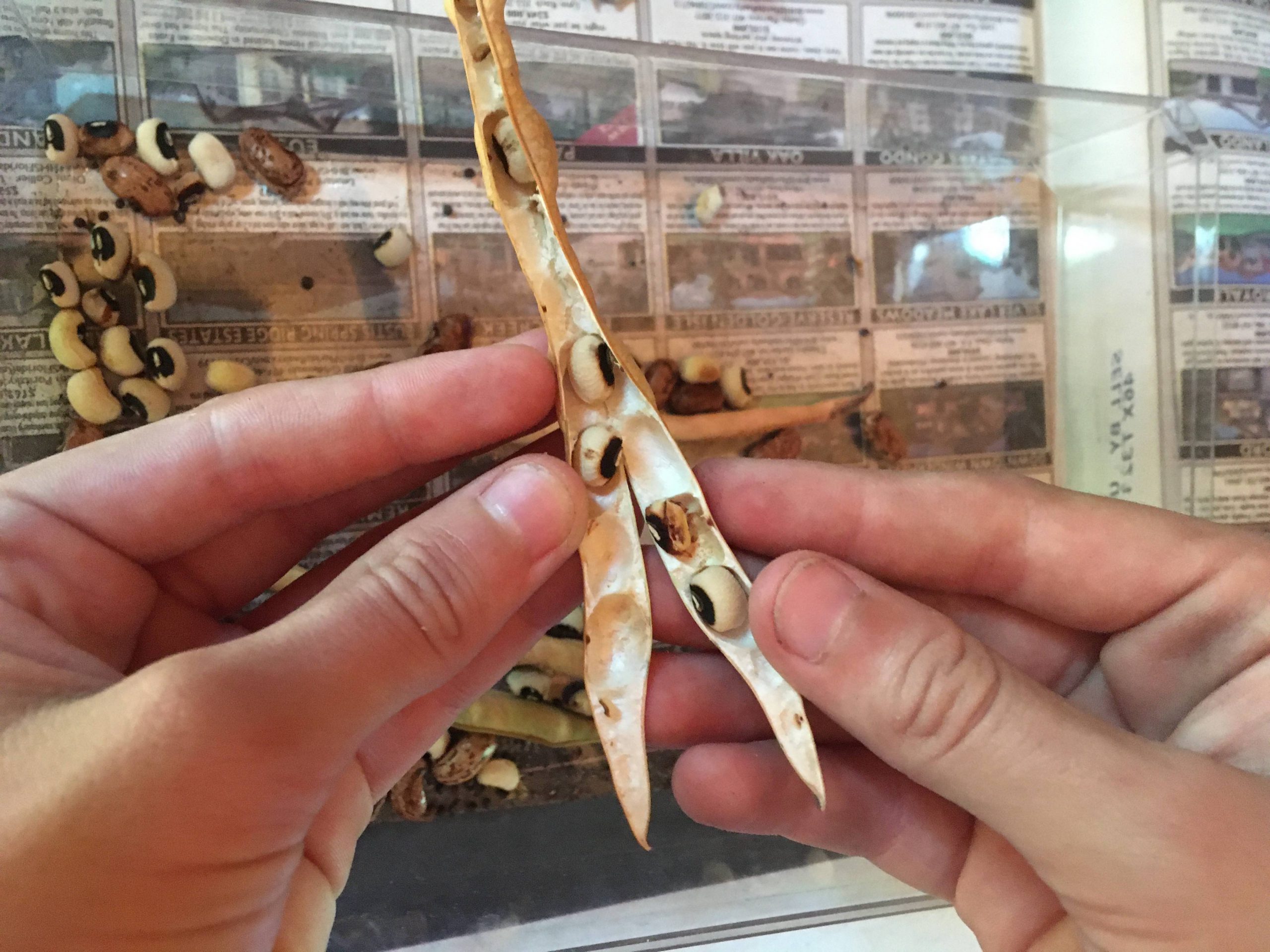Seed Saving 101
If you plan to start saving seeds, it’s best to choose open-pollinated (heirloom vegetable) varieties so the new plant will have characteristics similar to the parent plant. It is not recommended to save seeds from hybrid or GMO varieties of plants because they will not grow similar to their parent.
Dry Seeds

The easiest seeds to save are dry seeds in the Fabaceae family, which includes bean and pea seeds such as green beans, pole beans, black eyed peas, sweet peas, and pigeon peas. These seeds dry when mature and they are self-pollinated, so they grow true to type. The seeds naturally dry on the plant so all you have to do is wait until the beans and pea pods turn brown on the plant, collect them and remove the seeds from the pods. Other examples of dry seeds that are also easy to save are lettuce, okra, basil, mustard, sunflower and corn.
Self-pollinated Seeds
Pollination is another factor to consider when saving seeds as some plants are self-pollinated and others are cross-pollinated. Self-pollinated plants have perfect flowers that contain male and female reproductive parts. The self-pollination process is simple because the pollen is transferred to the stigma when the flower blooms. Self-pollinated vegetable crops include beans, lettuce, and tomatoes. These are the easiest seeds for beginners to learn how to save and grow.
Wet Seeds

Seeds that hold their seeds around a moist fruit are considered wet seeds and many of these seeds are cross-pollinated. Tomato, cucumber, squash, pepper, eggplant, watermelon, and papaya are just a few examples of wet seeds. To save wet seeds you must remove them from the fleshy fruit and try to get the pulp off. It’s okay to put them in a bowl of water to clean them and then dry them on a paper bag. Tomato and other wet seeds can be fermented in a jar with a breathable lid for 1 to 4 days to help remove the jelly-like seed coating that prohibits germination. Otherwise, you can rub off the gel coating on a piece of newspaper.
Cross-pollinated seeds

Cross-pollination of flowers occurs when pollen is transferred from flower to flower within the same species. Bees and other pollinators help us cross-pollinate our fruits and vegetables. However, you need to be aware of cross-pollination when seed saving to ensure seed purity. For example, sweet peppers and hot peppers are all varieties in the same species, Capsicum annuum. If they cross, the offspring may be sweet or hot. When saving seeds, use distance or isolation techniques to prevent cross-pollination. You may need to intervene and hand pollinate your flowers to get the cross accomplished successfully. The other option is to keep a distance from plants of the same species that may cross pollinate, and this distance is different for each species. Isolation is accomplished with distance, using netting or isolation cages.
Storing Saved Seeds
Store seeds in a cool dry place in paper packets or plastic bags. Humid conditions increase seed moisture and reduce the seed’s shelf life. Alternatively, seal seeds in an airtight jar and place in a refrigerator. See Seeding the Garden and Gardening Solutions Seed Saving webpages. Seeds generally have a shelf life of only one to five years, so grow them out and save seeds every couple of years to preserve your favorite varieties. Approximate life expectancy of seeds stored in favorable conditions can be found here.
Seed Saving Webinar and Videos
Want to learn more? Check out my short papaya seed saving and Seminole pumpkin seed saving videos to learn more about the process. Watch my in-depth presentation from the Seed Saving webinar.
Follow us! Check out horticulture classes offered by UF/IFAS Extension Orange County at www.gardenflorida.eventbrite.com. Read about Florida-Friendly Landscaping™ at https://ffl.ifas.ufl.edu/. Follow us on Facebook at https://www.facebook.com/GardenFlorida/ and Instagram at https://www.instagram.com/oc_extension/.
 2
2
